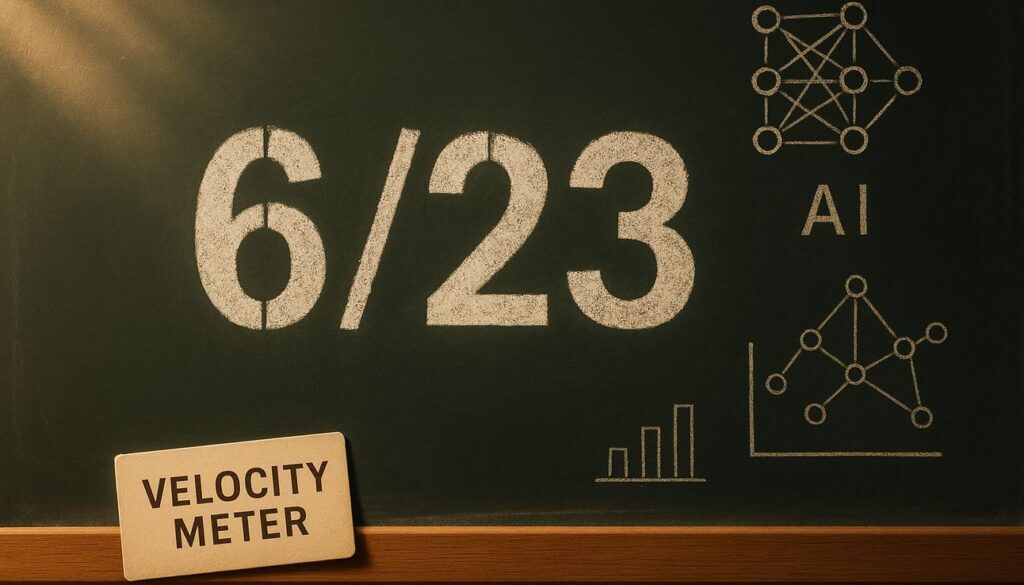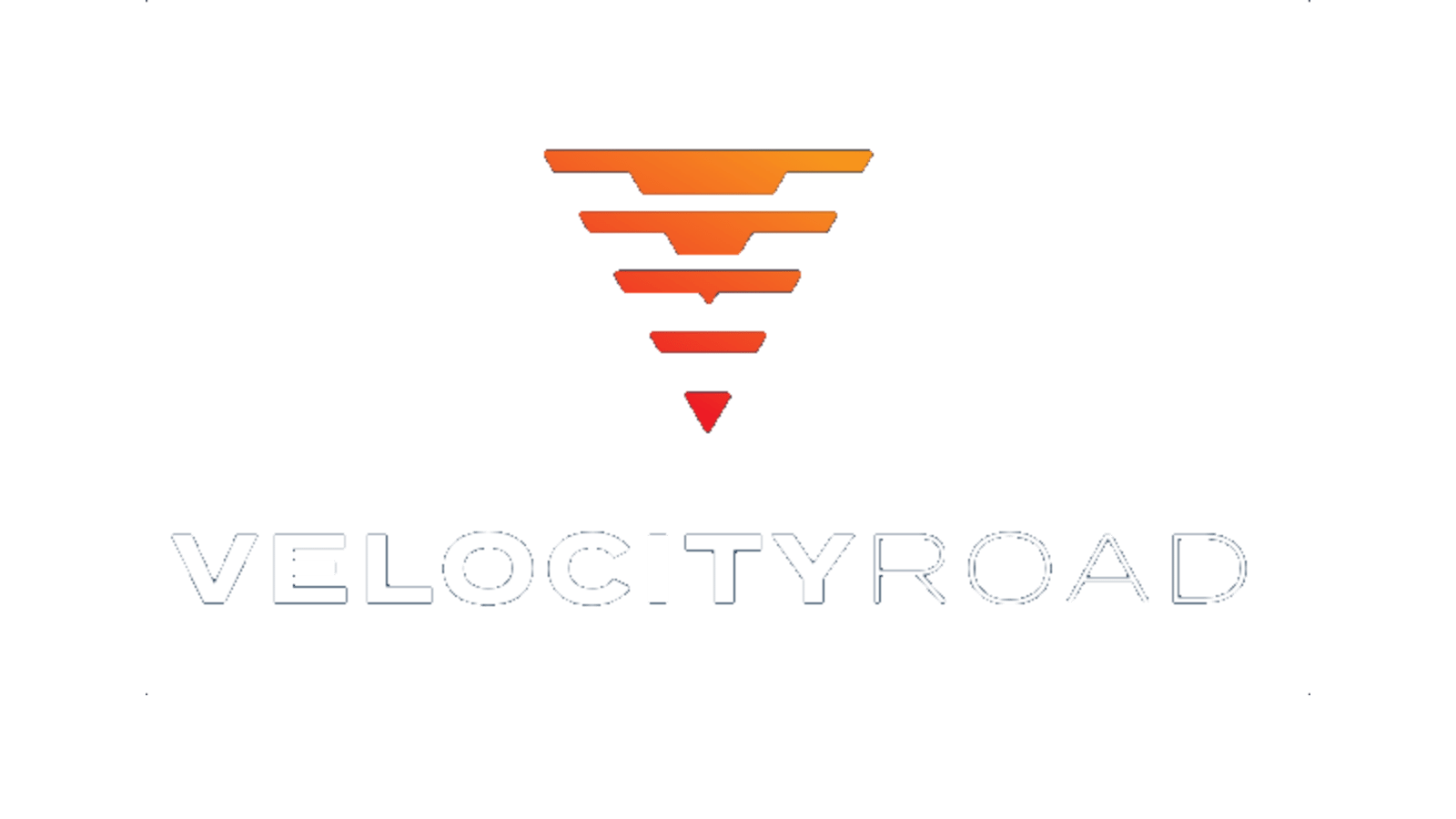Velocity Meter 6.23
🔗 The Interoperability Revolution: How AI Systems Are Learning to Talk to Each Other
The AI landscape is undergoing a fundamental shift. While we’ve spent the last year focused on individual AI tools and isolated use cases, a new layer is emerging—one where AI systems seamlessly communicate, coordinate, and collaborate without human intervention. This isn’t just about better chatbots or smarter automation. It’s about creating a connected ecosystem where AI agents can discover, integrate, and orchestrate complex workflows across platforms, APIs, and organizations.
For mid-market leaders, this represents the difference between having scattered AI pilots and building truly transformative AI infrastructure. The companies that understand and leverage this interoperability revolution won’t just gain efficiency—they’ll fundamentally rewire how business gets done.
The question isn’t whether your competitors are adopting AI anymore. It’s whether they’re building systems that can adapt, scale, and evolve autonomously. Let’s dive in.

🌐 The Connected AI Revolution: When Systems Start Speaking the Same Language

The internet has a new layer, and it’s designed for machines, not humans.
Model Context Protocol (MCP) and Invoke Network are emerging as the HTTP and HTML of the AI age, creating standardized ways for AI agents to discover, communicate, and coordinate with each other. Just as the shipping container revolutionized global trade through standardization, these protocols are about to do the same for AI workflows.
Think about what this means practically. Instead of building custom integrations for every AI tool in your stack, you’ll have agents that can dynamically discover new capabilities, delegate tasks to specialized systems, and coordinate complex multi-step processes—all without hardcoded instructions.
Anthropic’s research on multi-agent systems demonstrates this power in action: their multi-agent research system outperformed single-agent configurations by 90.2% on complex tasks. The secret? Parallel processing with specialized subagents, each with distinct tools and expertise, working together through standardized communication protocols.
The business implications are staggering:
-
🔧 Dynamic capability discovery: AI agents can find and use new tools as they become available
-
⚡ Parallel processing: Complex tasks split across multiple specialized agents simultaneously
-
🎯 Reduced path dependency: Less rigid, more adaptive workflows that evolve with your business
-
📈 Exponential scaling: Performance gains that compound as more agents join the network
Bottom Line: We’re moving from AI as isolated tools to AI as a collaborative workforce. The companies that build interoperable AI systems today will have an insurmountable advantage as this ecosystem matures.

🏭 AI Across Industries

🏛️ Public Sector: The Workshop Model for AI Transformation
Google’s partnership with the US Conference of Mayors reveals a systematic approach to AI adoption that mid-market companies should steal. Their “AI Adoption Workshop” framework starts with industry-wide risk assessment, moves to detailed company diligence, then develops specific use cases with clear implementation roadmaps. The key insight: successful AI adoption requires structured methodology, not just enthusiasm.
📌 Takeaway: Copy the government’s homework—structured workshops that align AI initiatives with organizational values while building systematic capabilities.
💼 Private Equity: Value Creation Through AI Infrastructure
Apollo Global Management’s systematic AI value creation across portfolio companies is producing measurable results. Cengage achieved 40% cost reductions in content production, Yahoo saw 20%+ productivity gains, and Barnes Group generated a 5x ROI in year one. Their secret: treating AI as infrastructure investment, not technology experiment.
📌 Takeaway: PE firms are proving that systematic AI implementation—with proper talent, processes, and measurement—delivers consistent value creation at scale.
🎨 Creative Industries: The Democratization of High-Quality Content
AI image generators are reshaping creative workflows, with platforms like DALL-E 3, Midjourney, and Adobe Firefly enabling non-artists to produce professional-quality visuals. The democratization extends beyond individual creativity to business content production—marketing teams can now generate diverse, high-quality visual content without traditional creative resources.
📌 Takeaway: The creative economy is being restructured around AI-human collaboration, creating opportunities for businesses to dramatically reduce content production costs while maintaining quality.
📱 Social Media: The Rise of Synthetic Influence
TikTok’s Symphony platform now generates AI avatars for product placement and influencer-style content, creating virtual try-ons and product demonstrations without human influencers. While offering unprecedented scale and cost efficiency, it signals a broader shift toward AI-generated marketing content across social platforms.
📌 Takeaway: AI-generated content is becoming mainstream in digital marketing, offering cost advantages but requiring new strategies for authenticity and brand trust.

📊 AI by the Numbers

📈 50% of Business Decisions Automated by 2027
Gartner predicts AI will handle half of all business decisions within two years, with 10% of executive boards using AI for major strategic decisions by 2029. Companies investing in AI literacy training could see 20% higher revenues.
🎯 90.2% Performance Improvement from Multi-Agent Systems
Anthropic’s multi-agent research architecture outperformed single-agent systems by over 90% on complex tasks, though token usage increased 15x—justified by dramatically better outcomes for high-value work.
💼 67% of Workers See AI as Career Advancement Tool
Survey of 2,000 US office workers reveals only 17% fear AI job displacement, while two-thirds view it as career enhancement. Workers lose 3.5 hours weekly to routine tasks—exactly where AI can drive immediate value.
🏢 40% Cost Reduction in Content Production
Apollo’s portfolio company Cengage achieved 40% cost reductions in select content production processes, plus 15-20% improvements in lead generation and customer care through systematic AI implementation.
⚡ 15x Token Usage But Justified ROI
Multi-agent systems consume significantly more computational resources than single agents, but performance gains justify costs for high-value, complex tasks where quality matters more than efficiency.

📰 5 AI Headlines You Need to Know

🔄 Digital Transformation Gets Strategic Framework
Harvard Business Review analyzed six major digital transformations, revealing that successful companies treated AI as cultural transformation, not just technology adoption. Moody’s “sprinted into the fog” with AI despite uncertainty, while Honeywell consolidated 150+ systems to create integrated data foundation.
💰 Private Equity Firms Systematize AI Value Creation
Leading PE firms are developing repeatable AI methodologies despite industry-wide mixed results. MGX, BayPine, and GrowthCurve Capital focus on systematic talent acquisition, structured assessment processes, and exit-ready AI capabilities.
🗣️ Google Launches Voice-First AI Search Experience
Search Live enables conversational, background AI interactions using custom Gemini models with advanced voice capabilities. Future integration with camera input signals the evolution toward truly multimodal AI interfaces for business applications.
⚠️ CEO AI Messaging Creates Workforce Tension
Major CEOs are warning of AI job displacement while simultaneously pushing adoption, creating mixed messages that could hinder employee engagement. Research shows fear-based management reduces creativity and collaboration—exactly what companies need for AI transformation.
📊 Gartner: Half of Business Decisions Will Be AI-Driven by 2027
New research predicts massive shift toward AI-enabled decision making across organizational levels, with companies investing in AI literacy seeing up to 20% revenue advantages over competitors.

🎯 The Interoperability Imperative: Building Tomorrow’s AI Infrastructure Today

This week’s developments paint a clear picture: we’re transitioning from the “AI experimentation” phase to the “AI infrastructure” phase. The companies winning this transition aren’t just adopting AI tools—they’re building interoperable systems that can evolve, adapt, and scale autonomously.
The interoperability revolution matters because it solves the fundamental challenge of AI adoption: moving from scattered point solutions to integrated, systematic capabilities. When your AI agents can discover new tools, coordinate complex workflows, and adapt to changing requirements without constant human intervention, you’ve built something truly transformative.
For mid-market leaders, this is your moment. While large enterprises struggle with legacy systems and small companies lack resources, you have the perfect combination of scale and agility to build AI infrastructure that can compete with anyone.
The question isn’t whether to invest in AI anymore. It’s whether to build systems that can grow, adapt, and collaborate—or get left behind by those who do.
📩 Ready to build trust-driven AI implementations?
Velocity Road helps mid-market companies design AI strategies that employees embrace and customers prefer. Our proven frameworks ensure AI adoption that drives measurable results while building organizational confidence.
👉 Book a consultation to explore how to make AI a trusted partner in your operations
👉 Subscribe to Velocity Meter to stay ahead of the trends reshaping your industry.




